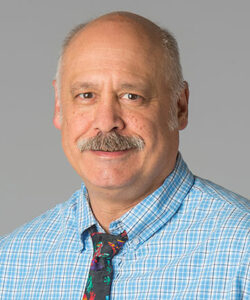Remembering champion of Spokane tourism Hartly Kruger
Former CVB president led Spokane campaigns into national spotlight

Hartly Kruger helped raise nationwide awareness of Spokane as a tourism destination, say people who worked alongside the former longtime head of the Spokane Area Convention & Visitor’s Bureau, which is now known as Visit Spokane.
Kruger led the Spokane CVB from 1985 until he retired in 2000. He died in Spokane on April 15 at the age of 92.
Recently retired Spokane advertising executive Ed Clark, who ran The Clark Co., says Kruger revitalized the Spokane CVB when he came on board.
“Spokane was doing local, regional, maybe statewide conventions,” says Clark, who worked on several promotions with Kruger. “He took us to national arena and made it necessary to expand the convention center.”
Mina Gokee, former Spokane CVB vice president, was hired by Kruger in 1987 and became his national sales manager.
“He was a visionary,” Gokee says. “He wanted to develop national marketing plans to go after conventions and meetings that would use all of our facilities.”
One of his many innovative ideas, for example, was to host fly-ins to introduce targeted meeting planners to Spokane, she says.
“We would invite them to come to Spokane on our dime for a first-class dog-and-pony show,” she says. “We partnered with hotels that would take turns hosting groups.”
The fly-ins would culminate in a dinner at Kruger’s house.
“He and his wife would host a huge dinner. They brought in fresh salmon, which he cooked himself,” Gokee says. “Meeting planners loved that. That was the personal touch.”
But the guests didn’t leave without the Spokane CVB asking for their business.
“Our closing rate was 80%, which wasn’t bad for a destination just getting known by a lot of these planners,” Gokee says.
Long before Al Gilson was a spokesperson for the Washington state Department of Transportation, a position from which he recently retired, he was hired by Kruger in 1985.
“Hartly Kruger was a tourism rock star,” Gilson says.
He says Kruger built the Spokane CVB staff up to a dozen employees. The CVB also had 60 volunteers, who helped operate visitor centers downtown, at the Washington-Idaho state line, and at Spokane International Airport.
“It was Hartly’s idea to advertise on local TV, because the stations reached a huge market,” Gilson says, noting that television broadcast stations here reach audiences spanning parts of four states and two Canadian provinces.
Gilson says forging new partnerships was Kruger’s forte.
“He was tearing down barriers between business groups and government entities to get everyone on the same page to promote Spokane and the Spokane region as a tourism destination,” he says.
Although Kate Hudson at Visit Spokane says none of the current staff have been there long enough to have known Kruger, others who had worked closely with him say he laid the foundation for the current organization.
Mike Kobluk, for example, who was director of entertainment facilities for the city prior to the formation of the Spokane Public Facilities District, says, “Hartly’s effort to bring new visitors to Spokane almost immediately took hold and is the same process being used today.”
He says Kruger helped grow tax–payer support for the Spokane Vet–erans Memorial Arena, which op–ened in 1995, and a 100,000-square-foot Spokane Convention Center expansion, which was completed in 2000.
“The arena took four votes,” Kobluk says. “Hartly was there behind the whole effort explaining how the new facilities—both the arena and convention center expansion—would allow him to bring in more and expanded events. His enthusiasm and vision of what was possible for those kinds of facilities helped convince the populace that we needed those things.”
Clark recalls being on the Spokane CVB board in the mid-1980s that conducted a nationwide search for the new Spokane CVB president and general manager.
“We got 150 resumes from around the country, and one name stood out: Hartly Kruger,” Clark says.
Kruger had been managing the Seattle-King County Convention & Visitors Bureau since the 1970s before deciding to return to his hometown of Spokane.
“He had a ton of experience,” Clark says. “When he was the guy in Seattle, they got national NCAA championship (1984 Final Four) in basketball.”
The Seattle CVB adopted the Emerald City as a nickname for Seattle in its promotional campaigns in 1982.
Five years earlier, Kruger had also helped to bring the NFL Pro Bowl to Seattle’s new Kingdome in 1977.
Kruger was a star basketball player at Lewis and Clark High School where he graduated in 1949. He played college basketball at the University of Idaho, was drafted by the Minneapolis Lakers in 1953, and is a 1980 inductee into the North Idaho Athletic Hall of Fame.
At 6 feet, 5 inches, Kruger’s height contributed to his commanding presence, Gokee and others say. “When he walked into the room, people noticed,” she says.
Clark notes that Kruger was proud of his Danish heritage, and as the Royal Danish Consul for Washington state, had been knighted by the queen of Denmark.
After Kruger retired from the Spokane CVB, he helped restaurateur Bill Alles get Churchill’s Steakhouse off the ground, Clark says, even contributing ideas for the restaurant’s logo, which has the red and white markings of the Danish flag as its background.
Kruger is survived by his wife JoAnn, daughter Jan Jorg, five grandchildren, and two great grandchildren.
Related Articles


_c.webp?t=1763626051)

_web.webp?t=1764835652)
